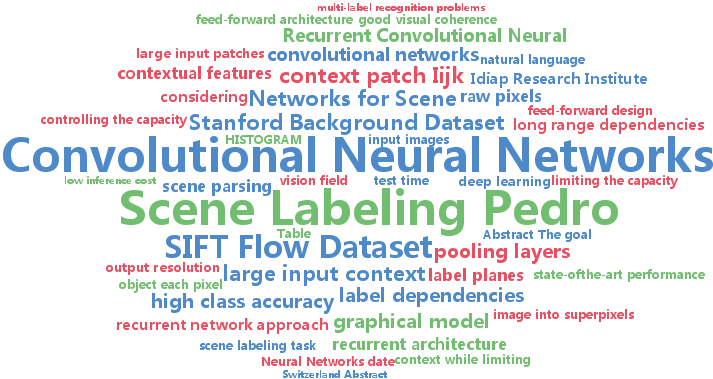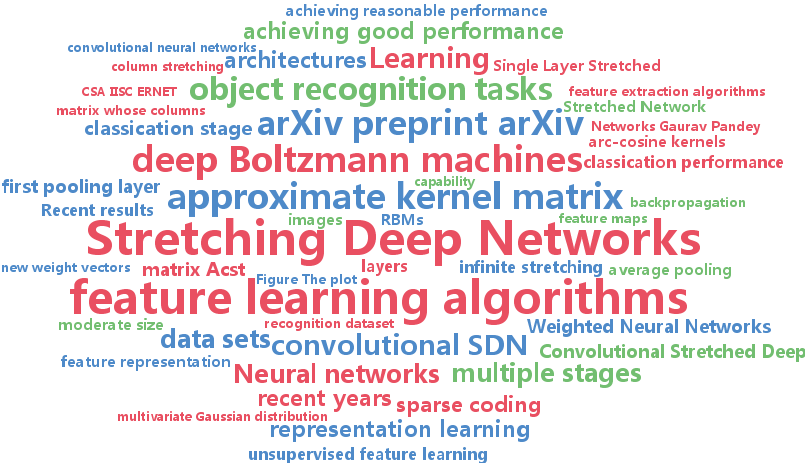convolutional neural networks
-
Pedro Pinheiro and Ronan Collobert
Recurrent Convolutional Neural Networks for Scene Labeling (pdf)
The goal of the scene labeling task is to assign a class label to each pixel in an image. To ensure a good visual coherence and a high class accuracy, it is essential for a model to capture long range pixel) label dependencies in images. In a feed-forward architecture, this can be achieved simply by considering a sufficiently large input context patch, around each pixel to be labeled. We propose an approach that consists of a recurrent convolutional neural network which allows us to consider a large input context while limiting the capacity of the model. Contrary to most standard approaches, our method does not rely on any segmentation technique nor any task-specific features. The system is trained in an end-to-end manner over raw pixels, and models complex spatial dependencies with low inference cost. As the context size increases with the built-in recurrence, the system identifies and corrects its own errors. Our approach yields state-of-the-art performance on both the Stanford Background Dataset and the SIFT Flow Dataset, while remaining very fast at test time.
-
Gaurav Pandey and Ambedkar Dukkipati
Learning by Stretching Deep Networks (pdf)
In recent years, deep architectures have gained a lot of prominence for learning complex AI tasks because of their capability to incorporate complex variations in data within the model. However, these models often need to be trained for a long time in order to obtain good results. In this paper, we propose a technique, called `stretching', that allows the same models to perform considerably better with very little training. We show that learning can be done tractably, even when the weight matrix is stretched to infinity, for some specific models. We also study tractable algorithms for implementing stretching in deep convolutional architectures in an iterative manner and derive bounds for its convergence. Our experimental results suggest that the proposed stretched deep convolutional networks are capable of achieving good performance for many object recognition tasks. More importantly, for a fixed network architecture, one can achieve much better accuracy using stretching rather than learning the weights using backpropagation.

